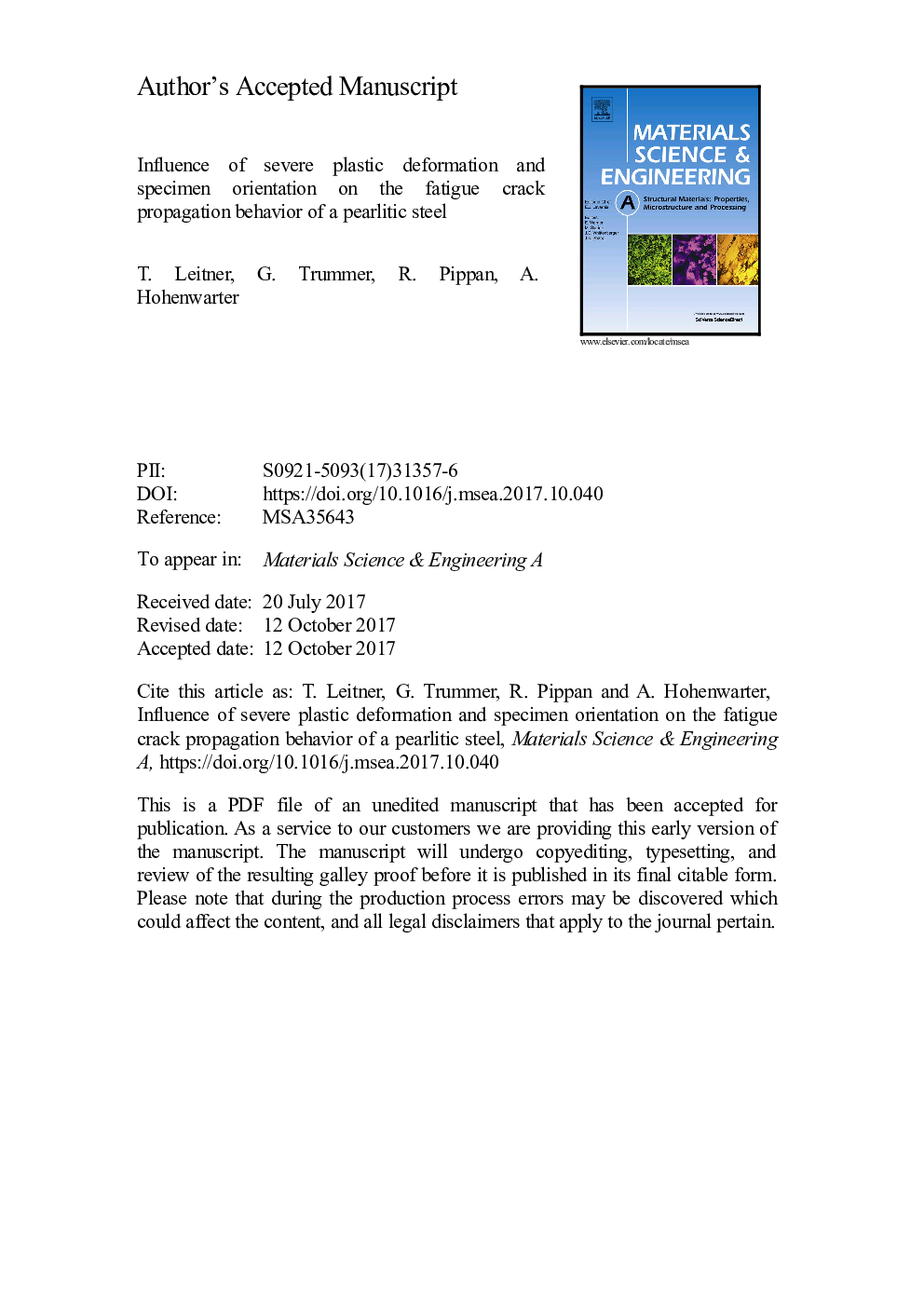| Article ID | Journal | Published Year | Pages | File Type |
|---|---|---|---|---|
| 7974481 | Materials Science and Engineering: A | 2018 | 27 Pages |
Abstract
Fatigue crack propagation (FCG) experiments performed on a fully pearlitic steel subjected to severe plastic deformation are presented. The steel was deformed by high-pressure torsion to study the influence of applied strain and specimen orientation on the FCG-behavior. With increasing strain the lamellar structure of the steel is aligned parallel to the shear plane of the HPT-sample and the lamella spacing is markedly reduced. These microstructural changes exhibit a significant influence on the FCG-behavior. The threshold of stress intensity factor range decreases, while at the same time the fatigue crack propagation rate rises with increasing level of pre-deformation. In addition a pronounced anisotropy in the crack propagation behavior depending on the specimen orientation evolves. The observed trends will be explained on the basis of the fading influence of shielding mechanisms and the microstructural alignment of the structure upon deformation.
Keywords
Related Topics
Physical Sciences and Engineering
Materials Science
Materials Science (General)
Authors
T. Leitner, G. Trummer, R. Pippan, A. Hohenwarter,
